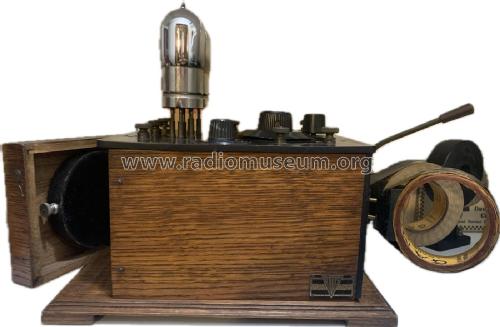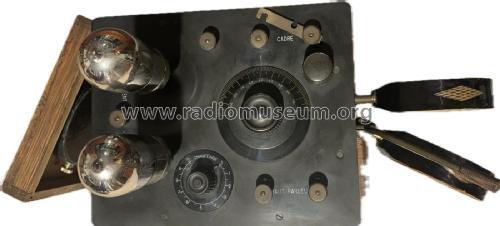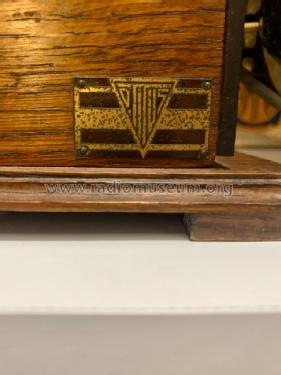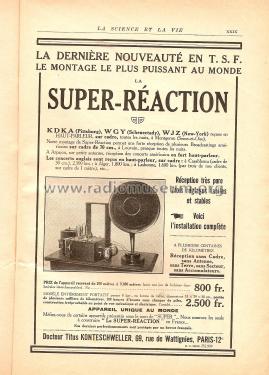- Land
- Frankreich / France
- Hersteller / Marke
- Titus Konteschweller, Dr. Titus; Paris
- Jahr
- 1924

- Kategorie
- Rundfunkempfänger (Radio - oder Tuner nach WW2)
- Radiomuseum.org ID
- 114519
- Anzahl Röhren
- 2
- Röhren
- Hauptprinzip
- Spezialschaltung (siehe Bemerkungen); Pendelrückkopplungs-Empfänger
- Anzahl Kreise
- 1 Kreis(e) AM
- Wellenbereiche
- Langwelle, Mittelwelle und Kurzwelle.
- Betriebsart / Volt
- Akku und/oder Batterie / 4 & 80 Volt
- Lautsprecher
- - Dieses Modell benötigt externe(n) Lautsprecher.
- Material
- Holz, von aussen SICHTBARE RÖHREN.
- von Radiomuseum.org
- Modell: Normal - Titus Konteschweller, Dr.
- Form
- Tischgerät, Truhenform, meist mit Deckel (NICHT Schrägpult).
- Bemerkung
-
Montage super-réaction, Modèle normal.
Montage super-réaction modèle normal. See also in: P. HEMARDINQUER «LA SUPERHETERODYNE ET LA SUPERREACTION» [1926] Pages 126-129 and: La Nature 1925 page 248 and 397 or «Radiofil Magazine» N° 66, Page 48, «Titus Konteschweller Le champion de la superréaction».
The model "Ordinaire" in this family of very similar models has two flaps, the "Normal" has one pair of coils and one flap and the "Universel" has two pairs of of coils.Voir un article sur Titus Konteschweller avec le schéma de base de l' appareil.
- Literaturnachweis
- Le Guide du Collectionneur TSF Biraud/Foster, Vol. II (page 363)
- Autor
- Modellseite von Ernst Erb angelegt. Siehe bei "Änderungsvorschlag" für weitere Mitarbeit.
- Weitere Modelle
-
Hier finden Sie 10 Modelle, davon 10 mit Bildern und 4 mit Schaltbildern.
Alle gelisteten Radios usw. von Titus Konteschweller, Dr. Titus; Paris
Sammlungen
Das Modell Normal befindet sich in den Sammlungen folgender Mitglieder.
Forumsbeiträge zum Modell: Titus Konteschweller: Normal
Threads: 1 | Posts: 1
I posted photos of my Dr. Titus "Normal" model today and wanted to state that mine differs from the photos I've seen of the few existing examples of this model in that it has an extra dial in the upper right hand of the top panel. It acts as a vernier control for the variable capacitor which is dealt with using a single combination dial on the other examples I've seen.
David Smith, 13.Mar.24






